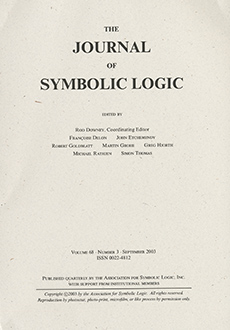Abstract
This paper introduces an extension 𝒜 of Kleene’s axiomatization of Brouwer’s intuitionistic analysis, in which the classical arithmetical and analytical hierarchies are faithfully represented as hierarchies of the domains of continuity. A domain of continuity is a relation R(α) on Baire space with the property that every constructive partial functional defined on {α: R(α)} is continuous there. The domains of continuity for 𝒜 coincide with the stable relations (those equivalent in 𝒜 to their double negations), while every relation R(α) is equivalent in 𝒜 to ∃ β A(α,β) for some stable A(α,β) (which belongs to the classical analytical hierarchy).
The logic of 𝒜 is intuitionistic. The axioms of 𝒜 include countable comprehension, bar induction, Troelstra’s generalized continuous choice, primitive recursive Markov’s Principle and a classical axiom of dependent choices proposed by Krauss. Constructive dependent choices, and constructive and classical countable choice, are theorems. 𝒜 is maximal with respect to classical Kleene function realizability, which establishes its consistency. The usual disjunction and (recursive) existence properties ensure that 𝒜 preserves the constructive sense of “or” and “there exists.”
Citation
Joan Rand Moschovakis. "Classical and constructive hierarchies in extended intuitionistic analysis." J. Symbolic Logic 68 (3) 1015 - 1043, September 2003. https://doi.org/10.2178/jsl/1058448452
Information





